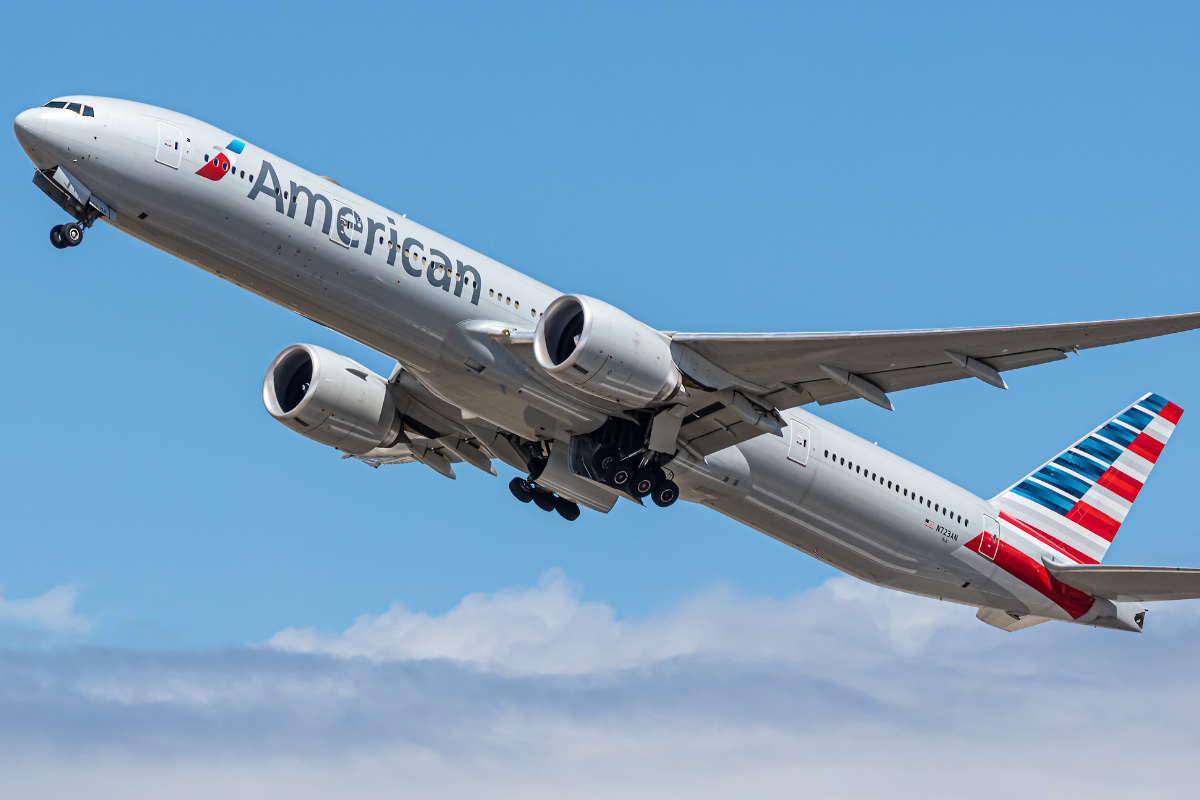
The National Transportation Safety Board (NTSB) is urging Boeing and Airbus to develop a new sophisticated cockpit safety system that would alert pilots if they are about to enter a runway where another plane is preparing to takeoff or land.
The recommendation was made by the federal agency as part of the final report into a near miss involving an American Airlines Boeing 777-300 aircraft which accidentally pulled onto an active runway just as a Delta 737 was starting to hurtle along the tarmac for takeoff.
Accident investigators concluded that the alarming near-miss on January 13, 2023, at New York JFK, was caused when the pilots of American Airlines flight AA106 took the wrong turn on the myriad taxiways at the airport because they became distracted when multitasking.
New York JFK already has two advanced safety systems designed to prevent an airliner from entering an active runway when another plane is taking off or landing. However, in this incident, one of those systems, known as a runway status light system, proved ineffective.
The system comprises a series of lights built into the tarmac at runway intersections that shine a bright red colour to alert pilots not to pull onto the runway as there is another plane already on the runway.
In this incident, the system worked as designed but the lights only switched to red at the point the nose of the American Airlines plane had already crossed the threshold, meaning that the pilots couldn’t see the lights.
At this point, the pilots didn’t have any other automated safety system to alert them to the fact that a plane was speeding towards them, and had to rely on their eyesight to spot any dangers. Unfortunately, it was a dark night, and scores of competing bright airfield lights obscured their view.
Thankfully, an alert system in the control tower alerted the air traffic controller to the impending danger and they were able to warn the pilots of the Delta Air Lines plane who performed an emergency stop on the runway.
Among a slew of other safety recommendations, the NTSB has called on the Federal Aviation Administration to work with aircraft manufacturers and software developers to create a “flight deck system that would provide a visual and aural alert to flight crews of traffic on a runway or taxiway and traffic on approach to land”.
The NTSB would also like to see the FAA mandate that any new technology is required to be fitted to all commercial airplanes, rather than simply requiring the technology to be installed on newly built planes.
In addition, the NTSB has called on the FAA to review the Runway Status Light System to improve its effectiveness, while the accident investigators urged the FAA to dramatically increase the length of recording time on Cockpit Voice Recorders from the current limit of just two hours.
The NTSB repeated its cockpit voice recorder recommendation because the American Airlines plane was allowed to takeoff as scheduled for London Heathrow, meaning that voice data from the incident had been wiped by the time the plane landed.
Much to the dismay of pilots unions, the FAA has already announced plans to require newly manufactured planes to have CVRs with up to 25 hours of recording time. However, the recently passed FAA Reauthorization Act also gives the FAA the power to require longer CVRs to be installed on existing aircraft.
Related
Mateusz Maszczynski honed his skills as an international flight attendant at the most prominent airline in the Middle East and has been flying ever since... most recently for a well known European airline. Matt is passionate about the aviation industry and has become an expert in passenger experience and human-centric stories. Always keeping an ear close to the ground, Matt's industry insights, analysis and news coverage is frequently relied upon by some of the biggest names in journalism.







